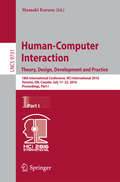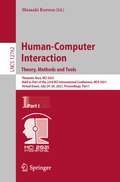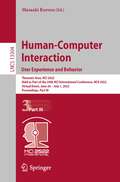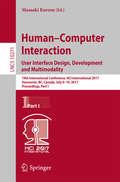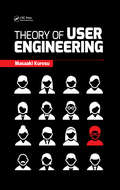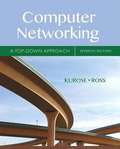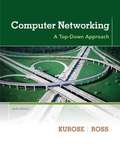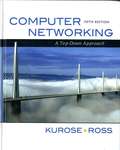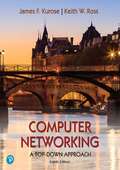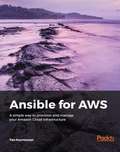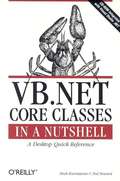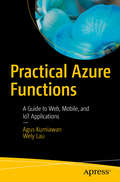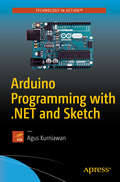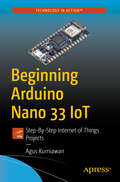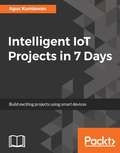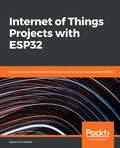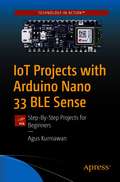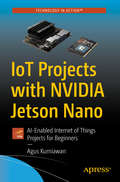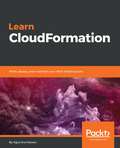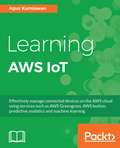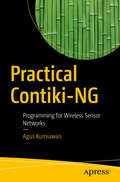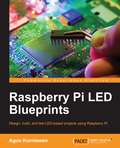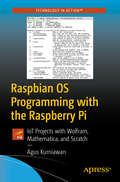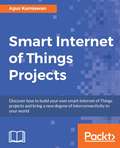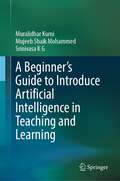- Table View
- List View
Human-Computer Interaction. Theory, Design, Development and Practice
by Masaaki KurosuThe 3-volume set LNCS 9731, 9732, and 9733 constitutes the refereed proceedings of the 18th International Conference on Human-Computer Interaction, HCII 2016, held in Toronto, ON, Canada, in July 2016. The total of 1287 papers presented at the HCII 2016 conferences was carefully reviewed and selected from 4354 submissions. The papers thoroughly cover the entire field of Human-Computer Interaction, addressing major advances in knowledge and effective use of computers in a variety of application areas. The volumes constituting the full 27-volume set of the conference proceedings are listed on pages VII and VIII.
Human-Computer Interaction. Theory, Methods and Tools: Thematic Area, HCI 2021, Held as Part of the 23rd HCI International Conference, HCII 2021, Virtual Event, July 24–29, 2021, Proceedings, Part I (Lecture Notes in Computer Science #12762)
by Masaaki KurosuThe three-volume set LNCS 12762, 12763, and 12764 constitutes the refereed proceedings of the Human Computer Interaction thematic area of the 23rd International Conference on Human-Computer Interaction, HCII 2021, which took place virtually in July 2021.The total of 1276 papers and 241 posters included in the 39 HCII 2021 proceedings volumes was carefully reviewed and selected from 5222 submissions. The 139 papers included in this HCI 2021 proceedings were organized in topical sections as follows: Part I, Theory, Methods and Tools: HCI theory, education and practice; UX evaluation methods, techniques and tools; emotional and persuasive design; and emotions and cognition in HCI Part II, Interaction Techniques and Novel Applications: Novel interaction techniques; human-robot interaction; digital wellbeing; and HCI in surgery Part III, Design and User Experience Case Studies: Design case studies; user experience and technology acceptance studies; and HCI, social distancing, information, communication and work
Human-Computer Interaction. User Experience and Behavior: Thematic Area, HCI 2022, Held as Part of the 24th HCI International Conference, HCII 2022, Virtual Event, June 26 – July 1, 2022, Proceedings, Part III (Lecture Notes in Computer Science #13304)
by Masaaki KurosuThe three-volume set LNCS 13302, 13303 and 13304 constitutes the refereed proceedings of the Human Computer Interaction thematic area of the 24th International Conference on Human-Computer Interaction, HCII 2022, which took place virtually in June-July 2022. The 132 papers included in this HCI 2022 proceedings were organized in topical sections as follows: Part I: Theoretical and Multidisciplinary Approaches in HCI; Design and Evaluation Methods, Techniques and Tools; Emotions and Design; and Children-Computer Interaction, Part II: Novel Interaction Devices, Methods and Techniques; Text, Speech and Image Processing in HCI; Emotion and Physiological Reactions Recognition; and Human-Robot Interaction, Part III: Design and User Experience Case Studies, Persuasive Design and Behavioral Change; and Interacting with Chatbots and Virtual Agents.
Human-Computer Interaction. User Interface Design, Development and Multimodality
by Masaaki KurosuThe two-volume set LNCS 10271 and 10272 constitutes the refereed proceedings of the 19th International Conference on Human-Computer Interaction, HCII 2017, held in Vancouver, BC, Canada, in July 2017. The total of 1228 papers presented at the 15 colocated HCII 2017 conferences was carefully reviewed and selected from 4340 submissions. The papers address the latest research and development efforts and highlight the human aspects of design and use of computing systems. They cover the entire field of Human-Computer Interaction, addressing major advances in knowledge and effective use of computers in a variety of application areas. The papers included in this volume cover the following topics: HCI theory and education; HCI, innovation and technology acceptance; interaction design and evaluation methods; user interface development; methods, tools, and architectures; multimodal interaction; and emotions in HCI.
Theory of User Engineering
by Masaaki KurosuThis book outlines the new concept of user engineering and covers the diversity of users, along with the business process that includes the design and the user’s experience processes. Although the concept of user experience (UX) has become popular, the definition and the methodology are still ambiguous. User engineering is similar to the user-centered design, but differs in that its scope is not limited to the design process but concerns the whole manufacturing process and the whole usage process, i.e., the whole lifecycle of an artifact. User’s perspective is strongly emphasized in this book, hence, its stance is far from that of the marketing approach that usually fails to notice the life and experiences of users after the purchase of an artifact as consumers. Theory of User Engineering differentiates between the quality in design and the quality in use, and the objective quality characteristics and the subjective quality characteristics. In addition to the user research using ethnographic methods, the author introduces a new approach based on the artifact evolution theory that can be adopted in the planning stage.
Computer Networking: A Top-down Approach
by James Kurose Keith RossComputer Networking: A Top-Down Approach Featuring the Internet
Computer Networking: A Top-Down Approach (Sixth Edition)
by James F. Kurose Keith W. RossComputer Networking continues with an early emphasis on application-layer paradigms and application programming interfaces (the top layer), encouraging a hands-on experience with protocols and networking concepts, before working down the protocol stack to more abstract layers. This book has become the dominant book for this course because of the authors' reputations, the precision of explanation, the quality of the art program, and the value of their own supplements.
Computer Networking: A Top-down Approach (5th Edition)
by James F. Kurose Keith W. RossBuilding on the successful top-down approach of previous editions, the Fifth Edition of Computer Networking continues with an early emphasis on application-layer paradigms and application programming interfaces, encouraging a hands-on experience with protocols and networking concepts. With this edition, Kurose and Ross have revised and modernized treatment of some key chapters to integrate the most current and relevant networking technologies. Networking today involves much more than standards specifying message formats and protocol behaviors-and it is far more interesting. Professors Kurose and Ross focus on describing emerging principles in a lively and engaging manner and then illustrate these principles with examples drawn from Internet architecture.
Computer Networking: A Top-down Approach
by James F. Kurose Keith W. RossComputer Networking builds on the authors' long tradition of teaching this complex subject through a layered approach in a “top-down manner.” Authors James Kurose and Keith Ross proceed from the application layer toward the physical layer, presenting important concepts early in your study of networking. Focusing on the fundamental issues of networking, the text provides an excellent foundation without requiring extensive prior knowledge of programming or mathematics. The 8th Edition has been updated to reflect the most important and exciting recent advances in networking. These include including software-defined networking (SDN) and the rapid adoption of 4G/5G networks and the mobile applications they enable.
Ansible for AWS
by Yan KurniawanA simple way to provision and manage your Amazon Cloud infrastructure About This Book * Get started with AWS management for infrastructure engineers * Explore techniques to set up and manage your private cloud using Ansible * A practical guide to help you manage AWS-based applications and infrastructure using Ansible Who This Book Is For If you are an infrastructure engineer, system administrator, or Dev Ops engineer, this book is for you. You will find this book helpful if you have previous experience with Linux systems administration, including familiarity with the command line, file system, and text editing. Prior basic knowledge of Amazon Web Services and some experience with Ansible is assumed. What You Will Learn * Set up your own AWS account and get started with the AWS console * Use Ansible Playbook to configure and launch EC2 instances * Delve deeper into the AWS cloud infrastructure and create and manage VPC * Provision Amazon Relational Database Service (RDS) with Ansible * Manage files in an Amazon Simple Storage Service (S3) bucket using Ansible * Extend Ansible's functionality in the AWS environment * Use Ansible to provision ELB and Auto Scaling groups * Manage IAM users, groups, roles, and keys * See how to refine and chain together AWS tools using Ansible In Detail Looking to get a simple and efficient way to manage your Amazon Cloud infrastructure? Ansible is exactly what you need. This book will show you how to use Ansible's cloud modules to easily provision and manage AWS resources including EC2, VPC, RDS, S3, ELB, ElastiCache, and Route 53. We'll take you beyond the basics of Ansible, showing you real-world examples of AWS infrastructure automation and management with detailed steps, complete code, and screen captures from the AWS console. The example projects inside this title will help you grasp the process leading to full AWS automation. From a single WordPress site to a highly available and scalable WordPress site, we'll demonstrate the power of using Ansible to provision and automate AWS-based infrastructure deployment. Style and approach This hands-on guide will help you get acquainted with techniques to implement AWS for your private cloud.
VB.NET Core Classes in a Nutshell
by Budi Kurniawan Ted NewardVB.NET Core Classes in a Nutshell, provides a concise and thorough reference to the types found in the core namespaces of the .NET Framework Class Library. A companion to VB.NET Language in a Nutshell, this is a reference that VB.NET programmers will turn to repeatedly. Due to a special partnership between O'Reilly and Microsoft, this book also includes a CD that integrates the book's reference into Visual Studio .NET.
Practical Azure Functions: A Guide to Web, Mobile, and IoT Applications
by Agus Kurniawan Wely LauStart developing Azure Functions and building simple solutions for serverless computing without worrying about infrastructure. With the increased need for deploying serverless computing, Azure Functions integrates with other Azure resources. This book is a quick reference and consists of a practical and problem-driven approach with the latest technology. Guided by step-by-step explanations and sample projects, you'll set up, build, and deploy Azure Functions to get the most out of this compute-on-demand service. After a foundational introduction to Azure Functions you'll prepare a development environment to serve and process an IoT Telemetry system, create Microservices, and monitor Azure Functions services to get application insights. What You’ll LearnReview the Interaction between Azure Functions and Azure data servicesApply Azure Functions in web applications and build interaction systems for mobile applicationsDevelop a serverless micro-service Serve and process IoT Telemetry systemsMonitor Azure Functions services and get application insightsWho This Book Is ForDevelopers, students, professionals and anyone interested in Azure Function technology and the Azure platform.
Arduino Programming with .NET and Sketch
by Agus KurniawanLeverage .NET and Sketch in your Arduino development implementation and integrate it into your .NET program.<P><P> There are many Arduino models and compatible shields that can be used in Arduino boards. Integrating between an Arduino platform and .NET technology or Sketch can produce more advantages. Arduino Programming using .NET and Sketch shows readers how to do so with practical Arduino projects, such as preparing a development environment, performing sensing and actuating with external devices, implementing Windows Remote Arduino and building a simple IoT program.<P> Use this quick reference to learn the basics of the Arduino platform for multiple models and start your Arduino programming in .NET and Sketch today.<P> What You'll Learn:<P> Learn the basics of the Arduino platform; Prepare and set up an Arduino development environment; Develop an Arduino program using .NET and Sketch; Implement Windows Remote Arduino Build a simple IoT program<P> Who This Book Is For:<P> .NET and Sketch developers who want to learn Arduino programming.
Beginning Arduino Nano 33 IoT: Step-By-Step Internet of Things Projects
by Agus KurniawanDevelop Internet of Things projects with Sketch to build your Arduino programs. This book is a quick reference guide to getting started with Nano 33 IoT, Arduino’s popular IoT board. You’ll learn how to access the Arduino I/O, understand the WiFi and BLE networks, and optimize your board by connecting it to the Arduino IoT Cloud. Arduino Nano 33 IoT is designed to build IoT solutions with supported WiFi and BLE networks. This board can be easily extend through I/O pins, sensors and actuators. Beginning Arduino Nano 33 IoT is the perfect solution for those interested in learning how to use the latest technology and project samples through a practical and content-driven approach. What You’ll LearnPrepare and set up Arduino Nano 33 IoT boardOperate Arduino Nano 33 IoT board hardware and softwareDevelop programs to access Arduino Nano 33 IoT board I/OBuild IoT programs with Arduino Nano 33 IoT boardWho This Book Is ForMakers, developers, students, and professional of all levels.
Intelligent IoT Projects in 7 Days
by Agus KurniawanDiscover how to build your own Intelligent Internet of Things projects and bring a new degree of interconnectivity to your world. About This Book • Build intelligent and unusual IoT projects in just 7 days, • Create home automation, smart home, and robotic projects and allow your devices to do smart work • Build IoT skills through enticing projects and leverage revolutionary computing hardware through the RPi and Arduino. Who This Book Is For If you're a developer, IoT enthusiast, or just someone curious about Internet of Things, then this book is for you. A basic understanding of electronic hardware, networking, and basic programming skills would do wonders. What You Will Learn • Learn how to get started with intelligent IoT projects • Explore various pattern recognition and machine learning algorithms to make IoT projects smarter. • Make decisions on which devices to use based on the kind of project to build. • Create a simple machine learning application and implement decision system concepts • Build a smart parking system using Arduino and Raspberry Pi • Learn how to work with Amazon Echo and to build your own smart speaker machine • Build multi-robot cooperation using swarm intelligence. In Detail Intelligent IoT Projects in 7 days is about creating smart IoT projects in just 7 days. This book will help you to overcome the challenge of analyzing data from physical devices. This book aims to help you put together some of the most exciting IoT projects in a short span of time. You'll be able to use these in achieving or automating everyday tasks—one project per day. We will start with a simple smart gardening system and move on to a smart parking system, and then we will make our own vending machine, a smart digital advertising dashboard, a smart speaker machine, an autonomous fire fighter robot, and finally look at a multi-robot cooperation using swarm intelligence Style and approach A clear step-by-step instruction guide to completing fully-fledged projects in just 7 days
Internet of Things Projects with ESP32: Build exciting and powerful IoT projects using the all-new Espressif ESP32
by Agus KurniawanCreate and program Internet of Things projects using the Espressif ESP32. Key Features Getting to know the all new powerful EPS32 boards and build interesting Internet of Things projects Configure your ESP32 to the cloud technologies and explore the networkable modules that will be utilised in your IoT projects A step-by-step guide that teaches you the basic to advanced IoT concepts with ESP32 Book Description ESP32 is a low-cost MCU with integrated Wi-Fi and BLE. Various modules and development boards-based on ESP32 are available for building IoT applications easily. Wi-Fi and BLE are a common network stack in the Internet of Things application. These network modules can leverage your business and projects needs for cost-effective benefits. This book will serve as a fundamental guide for developing an ESP32 program. We will start with GPIO programming involving some sensor devices. Then we will study ESP32 development by building a number of IoT projects, such as weather stations, sensor loggers, smart homes, Wi-Fi cams and Wi-Fi wardriving. Lastly, we will enable ESP32 boards to execute interactions with mobile applications and cloud servers such as AWS. By the end of this book, you will be up and running with various IoT project-based ESP32 chip. What you will learn Understand how to build a sensor monitoring logger Create a weather station to sense temperature and humidity using ESP32 Build your own W-iFi wardriving with ESP32. Use BLE to make interactions between ESP32 and Android Understand how to create connections to interact between ESP32 and mobile applications Learn how to interact between ESP32 boards and cloud servers Build an IoT Application-based ESP32 board Who this book is for This book is for those who want to build a powerful and inexpensive IoT projects using the ESP32.Also for those who are new to IoT, or those who already have experience with other platforms such as Arduino, ESP8266, and Raspberry Pi.
IoT Projects with Arduino Nano 33 BLE Sense: Step-By-Step Projects for Beginners
by Agus KurniawanGet started with the extremely versatile and powerful Arduino Nano 33 BLE Sense, a smart device based on the nRF52840 from Nordic semiconductors. This book introduces you to developing with the device.You'll learn how to access Arduino I/O such as analog and digital I/O, serial communication, SPI and I2C. The book also covers how to access sensor devices on Arduino Nano 33 BLE Sense, how to interact with other external devices over BLE, and build embedded Artificial Intelligence applications.Arduino Nano 33 BLE Sense consists of multiple built-in sensors such as 9-axis inertial, humidity, temperature, barometric, microphone, gesture, proximity, light color and light intensity sensors. With this book, you'll see how this board supports the Bluetooth Low Energy (BLE) network, enabling interactions with other devices over the network.What You’ll LearnPrepare and set up Arduino Nano 33 BLE Sense boardOperate Arduino Nano 33 BLE Sense board hardware and softwareDevelop programs to access Arduino Nano 33 BLE Sense board I/OBuild IoT programs with Arduino Nano 33 BLE Sense boardWho This Book Is ForMakers, developers, students, and professionals at any level interested in developing with the Arduino Nano 33 BLE Sense board.
IoT Projects with NVIDIA Jetson Nano: AI-Enabled Internet of Things Projects for Beginners
by Agus KurniawanExplore the capabilities of the NVIDIA Jetson Nano, an IoT device designed to perform computations like a computer desktop. This book will show you how to build your first project and optimize your devices, programs, and daily activities with the AI computation abilities of the Jetson Nano. This board consists of CPU Quad-core ARM A57 @ 1.43 GHz and GPU 128-core Maxwell. With this hardware specification, the board can run multiple neural networks in parallel for complex AI applications. With the integrated sensor and actuators, this board enables stronger IoT solutions and provides more advanced capabilities.Discover how develop complex IoT projects with the Jetson Nano today.What You’ll LearnSet up NVIDIA Jetson Nano deviceBuild applications like image classification, object detection, segmentation, and speech processingUse the Jetson Nano to process daily computer activities such as browsing the internet, checking emails, or playing music and videosImplement machine learning computations into your projectsWho This Book Is ForMakers, developers, students, and professional of all levels who are new to the NVIDIA Jetson Nano technology.
Learn CloudFormation: Write, deploy, and maintain your AWS infrastructure
by Agus KurniawanGet up and running with AWS automation using CloudFormationKey FeaturesExplore the fundamentals of AWS CloudFormationGet acquainted with concepts such as CloudFormation templates and mappingsLearn to implement Infrastructure as a Code (IaC) on AWSBook DescriptionAs the Amazon Web Services (AWS) infrastructure is gradually moving towards cloud, managing cloud-related tasks efficiently continues to be a challenge for system administrators. CloudFormation is a language developed for managing infrastructure-related services efficiently on AWS and its features help secure the AWS resource deployment process.Learn CloudFormation serves as a fundamental guide to kick-start your journey on CloudFormation. We will introduce you to the basic concepts on IaC and the AWS services required for implementing automation and infrastructure management. Then, we deep dive into concepts such as CloudFormation mapping, conditions, limit, and output and EC2. In the concluding chapters, you will manage the entire AWS infrastructure using CloudFormation templates.By the end of this book, you will get up and running with IaC with CloudFormation.What you will learnUnderstand AWS CloudFormationDevelop AWS CloudFormation templatesDeploy AWS CloudFormation for AWS resourcesBuild your first AWS CloudFormation projectExplore AWS Security featuresDeploy testing and production stages using CloudFormationWho this book is forLearn CloudFormation is for cloud engineers, system administrators, cloud architects, or any stakeholders working in the field of cloud development or cloud administration. Basic knowledge of AWS is necessary.
Learning AWS IoT: Effectively manage connected devices on the AWS cloud using services such as AWS Greengrass, AWS button, predictive analytics and machine learning
by Agus KurniawanLearn to use AWS IoT services to build your connected applications with the help of this comprehensive guide. Key Features Gets you started with AWS IoT and its functionalities Learn different modules of AWS IoT with practical use cases. Learn to secure your IoT communication Book Description The Internet of Things market increased a lot in the past few years and IoT development and its adoption have showed an upward trend. Analysis and predictions say that Enterprise IoT platforms are the future of IoT. AWS IoT is currently leading the market with its wide range of device support SDKs and versatile management console. This book initially introduces you to the IoT platforms, and how it makes our IoT development easy. It then covers the complete AWS IoT Suite and how it can be used to develop secure communication between internet-connected things such as sensors, actuators, embedded devices, smart applications, and so on. The book also covers the various modules of AWS: AWS Greengrass, AWS device SDKs, AWS IoT Platform, AWS Button, AWS Management consoles, AWS-related CLI, and API references, all with practical use cases. Near the end, the book supplies security-related best practices to make bi-directional communication more secure. When you've finished this book, you'll be up-and-running with the AWS IoT Suite, and building IoT projects. What you will learn Implement AWS IoT on IoT projects Learn the technical capabilities of AWS IoT and IoT devices Create IoT-based AWS IoT projects Choose IoT devices and AWS IoT platforms to use based on the kind of project you need to build Deploy AWS Greengrass and AWS Lambda Develop program for AWS IoT Button Visualize IoT AWS data Build predictive analytics using AWS IoT and AWS Machine Learning Who this book is for This book is for anyone who wants to get started with the AWS IoT Suite and implement it with practical use cases. This book acts as an extensive guide, on completion of which you will be in a position to start building IoT projects using AWS IoT platform and using cloud services for your projects.
Practical Contiki-NG: Programming for Wireless Sensor Networks
by Agus KurniawanExplore how to develop and implement wireless server networks (WSN) using Contiki-NG, branded as the operating system for the IoT. The book explains Contiki-NG’s advantages in sensing, communication, and energy optimization and enables you to begin solving problems in automation with WSN.Practical Contiki-NG is a guide to getting started with Contiki-NG programming featuring projects that demonstrate a variety of applications. This book takes a practical and content-driven approach to the latest technologies, including Raspberry Pi, IoT and cloud servers. Readers will go through step-by-step guides and sample scenarios such as sensing, actuating, connectivity, building middleware, and utilizing IoT and cloud-based technologies.If you're looking to go from zero to hero in using Contiki-NG to build Wireless Sensor Network (WSN) applications then this is the book for you. What You’ll LearnPrepare and set up Contiki-NG developmentReview the basics of the Contiki-NG platform to build Wireless Sensor Networks (WSN)Develop your own Contiki-NG programPerform sensing and actuating on the Contiki-NG platformImplement a middleware for Contiki-NG motesBuild a simple IoT program using the Contiki-NG environmentWho This Book Is ForDevelopers, students, researchers and anyone who has an interest in Wireless Sensor Network (WSN).
Raspberry Pi LED Blueprints
by Agus KurniawanDesign, build, and test LED-based projects using the Raspberry Pi About This Book Implement real LED-based projects for Raspberry Pi Learn to interface various LED modules such as LEDs, 7-segment, 4-digits 7 segment, and dot matrix to Raspberry Pi Get hands-on experience by exploring real-time LEDs with this project-based book Who This Book Is For This book is for those who want to learn how to build Raspberry Pi projects utilising LEDs, 7 segment, 4-digits 7 segment, and dot matrix modules. You also will learn to implement those modules in real applications, including interfacing with wireless modules and the Android mobile app. However, you don't need to have any previous experience with the Raspberry Pi or Android platforms. What You Will Learn Control LEDs, 7 segments, and 4-digits 7 segment from a Raspberry Pi Expand Raspberry Pi's GPIO Build a countdown timer Build a digital clock display Display numbers and characters on dot matrix displays Build a traffic light controller Build a remote home light control with a Bluetooth low energy module and Android Build mobile Internet-controlled lamps with a wireless module and Android In Detail Blinking LED is a popular application when getting started in embedded development. By customizing and utilising LED-based modules into the Raspberry Pi board, exciting projects can be obtained. A countdown timer, a digital clock, a traffic light controller, and a remote light controller are a list of LED-based inspired project samples for Raspberry Pi. An LED is a simple actuator device that displays lighting and can be controlled easily from a Raspberry Pi. This book will provide you with the ability to control LEDs from Raspberry Pi, starting from describing an idea through designing and implementing several projects based on LEDs, such as, 7-segments, 4-digits 7 segment, and dot matrix displays. Beginning with step-by-step instructions on installation and configuration, this book can either be read from cover to cover or treated as an essential reference companion to your Raspberry Pi. Samples for the project application are provided such as a countdown timer, a digital clock, a traffic light controller, a remote light controller, and an LED-based Internet of Things, so you get more practice in the art of Raspberry Pi development. Raspberry Pi LED Blueprints is an essential reference guide full of practical solutions to help you build LED-based applications. Style and approach This book follows a step-by-step approach to LED-based development for Raspberry Pi, explained in a conversational and easy-to-follow style. Each topic is explained sequentially in the process of building an application, and detailed explanations of the basic and advanced features are included.
Raspbian OS Programming with the Raspberry Pi: IoT Projects with Wolfram, Mathematica, and Scratch
by Agus KurniawanMaster the command line and Raspbian Linux as well as the physical connections of the Pi. With this book you’ll develop skills applicable to other real world applications in both hardware and software development all while working on simple and fun IoT projects that you can do yourself.You'll learn to build programs on the top of Raspbian OS in Raspberry Pi boards. Start by using Raspbian shells to develop programs.Then follow projects and samples step-by-step to get new experiences in Raspbian OS development. You'll also learn the Wolfram Language and Mathematica, Scratch, IoT programs and IoT middleware, Node-RED, Interactive Data Visualization with Jupyter Notebook, and more.There are many features in Raspbian OS and on Raspberry Pi boards perfect for building an IoT program to suite various scenarios. The GPIO pins on your Raspberry Pi allow it to scale further to accomplish all kinds of projects and tasks. Raspbian OS Programming with the Raspberry Pi is your pathway to exploring all of this.What You'll LearnDiscover the basics of programming in the Raspbian OS environment Work with the Raspbian Commandline Develop programs with the Wolfram Language and MathematicaWho This Book Is ForStudents and hobbyists interested in programming on Raspbian OS with Raspberry Pi boards.
Smart Internet of Things Projects
by Agus KurniawanDiscover how to build your own smart Internet of Things projects and bring a new degree of interconnectivity to your world About This Book * Learn how to extract and analyse data from physical devices and build smart IoT projects * Master the skills of building enticing projects such as a neural network autonomous car, computer vision through a camera, and cloud-based IoT applications * This project-based guide leverages revolutionary computing chips such as Raspberry Pi, Arduino, and so on Who This Book Is For If you are hobbyist who is keen on making smart IoT projects, then this book is for you. You should have a basic knowledge of Python. What You Will Learn * Implement data science in your IoT projects and build a smart temperature controller * Create a simple machine learning application and implement decision system concepts * Develop a vision machine using OpenCV * Build a robot car with manual and automatic control * Implement speech modules with your own voice commands for IoT projects * Connect IoT to a cloud-based server In Detail Internet of Things (IoT) is a groundbreaking technology that involves connecting numerous physical devices to the Internet and controlling them. Creating basic IoT projects is common, but imagine building smart IoT projects that can extract data from physical devices, thereby making decisions by themselves. Our book overcomes the challenge of analyzing data from physical devices and accomplishes all that your imagination can dream up by teaching you how to build smart IoT projects. Basic statistics and various applied algorithms in data science and machine learning are introduced to accelerate your knowledge of how to integrate a decision system into a physical device. This book contains IoT projects such as building a smart temperature controller, creating your own vision machine project, building an autonomous mobile robot car, controlling IoT projects through voice commands, building IoT applications utilizing cloud technology and data science, and many more. We will also leverage a small yet powerful IoT chip, Raspberry Pi with Arduino, in order to integrate a smart decision-making system in the IoT projects. Style and approach The book follows a project-based approach to building smart IoT projects using powerful boards such as the Raspberry Pi, Arduino, and the IoT chip.
A Beginner's Guide to Introduce Artificial Intelligence in Teaching and Learning
by Muralidhar Kurni Mujeeb Shaik Mohammed Srinivasa K GThis book reimagines education in today’s Artificial Intelligence (AI) world and the Fourth Industrial Revolution. Artificial intelligence will drastically affect every industry and sector, and education is no exception. This book aims at how AI may impact the teaching and learning process in education. This book is designed to demystify AI for teachers and learners. This book will help improve education and support institutions in the phenomena of the emergence of AI in teaching and learning. This book presents a comprehensive study of how AI improves teaching and learning, from AI-based learning platforms to AI-assisted proctored examinations. This book provides educators, learners, and administrators on how AI makes sense in their everyday practice. Describing the application of AI in ten key aspects, this comprehensive volume prepares educational leaders, designers, researchers, and policymakers to effectively rethink the teaching and learning process and environments that students need to thrive. The readers of this book never fall behind the fast pace and promising innovations of today’s most advanced learning technology.
